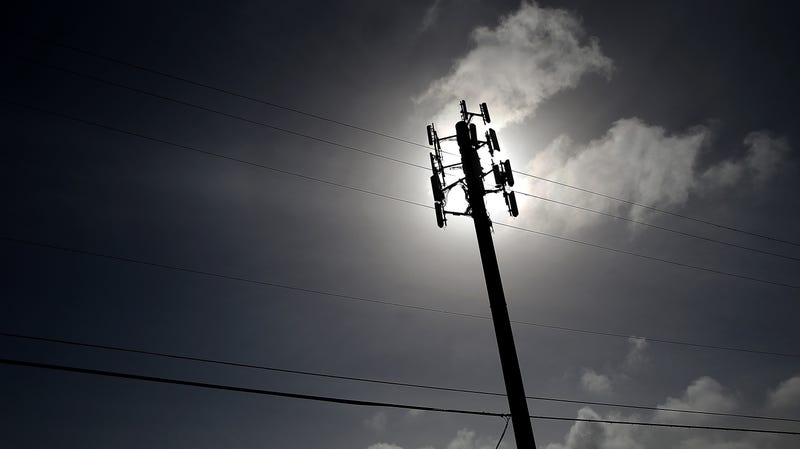
At this point, anytime you see the word unlimited in relation to phone plans, you should probably just assume you’re being misled. And after seeing the hijinks Verizon is trying to pull with its latest “unlimited” cell phone plan, it seemed like a good time to check in on the other major carriers to get a sense of how limited each company’s supposedly “unlimited” data plans really are.
AT&T
Without getting into the sad saga of AT&T’s grandfathered unlimited plan that isn’t available anymore, currently, among AT&T’s featured wireless plans, there are two choices: the $65 Unlimited Choice Enhanced plan and the $80 Unlimited Plus Enhanced plan. Right off the bat, the use of “unlimited” and “enhanced” along with “plus” and “choice” should have you immediately looking for caveats, as the only reason AT&T would want to throw all those words around is to make things sound better than they are.
The important details stashed away in the fine print is where AT&T says “Customers may temporarily experience slower speeds during busy times after 22GB/line/mo.” But even more frustrating is that for people who opt for the less expensive Unlimited Choice Enhanced, streaming video is limited to just 480p quality, as opposed to full 1080p HD for Plus Enhanced, which also gets 15GB of mobile hotspot data while Choice Enhanced subscribers get nothing.
While it’s true most people won’t use that much data in a one, just one instance of your wired internet connect going down at home or doing stuff like downloading music or movies on a road trip could have you hitting 22GB in less than a day, and once you hit the cap, you are at risk of see data speeds reduced until your next billing cycle rolls over.
T-Mobile
As for Uncarrier, the introduction of T-Mobile’s “unlimited” One plan in 2016 was a move that spurred AT&T and Verizon to bring back their own competing “unlimited” plans after getting rid of the the year prior. Today, the One plan is relatively straightforward with a base plan priced at $70 (which can be reduced to $40 per line if you have four lines), with upgrades available to One Plus or One Plus International for an additional $10 or $25 a month respectively.
Like with AT&T, the main difference between T-Mobile One and One Plus is that for an extra $10, One Plus offers HD video streaming and 10GB of 4G LTE hotspot data. However, once again, if were going by the definition of unlimited, those features really ought to be included in the base package. Meanwhile, One Plus International caters more towards frequent travelers, with upgrades for unlimited calling in a fair number of countries, faster data while overseas, and “unlimited” 4G LTE in Canada and Mexico and “unlimited” hotspot data.
The one big thing to know about T-Mobile “unlimited” data is that “On all T-Mobile plans, during congestion, the small fraction of customers using >50GB/mo. may notice reduced speeds until next bill cycle due to data prioritization.” A 50GB cap before you start seeing reduced speed is nice, and more than double what you get from AT&T, but once again, still not unlimited.
Sprint
For customers on Sprint, things are also quite simple thanks to the “Unlimited” Freedom plan with features a single price tier that starts at $60 a month, with the second line costing $40, and ignoring Sprint’s current promotional pricing, another $30 each for lines three, four, and five. One nice benefit is that users don’t need to pay extra to get full HD video streaming or mobile hotspot data, which is limited to 10GB of month, with additional 10GB installments available for an extra $10.
The font size is only marginally smaller than how it actually looks on Sprint’s website. Screenshot: Sprint
When it comes to data caps, Sprint says “Customers who use more than 23GB of data during a billing cycle will be deprioritized during times & places where the Sprint network is constrained.” which is quite similar to the 22GB soft cap employed by AT&T. However, one thing that seems particularly amusing, and a bit petty, is that in the fine text found below Sprint’s phone plan comparison chart, there’s a little line that lists the data caps on other carriers, but doesn’t specify what Sprint’s cap is, which is found in a dense forest of fine print at the very bottom of the page.
Verizon
Finally, we come Verizon, which yesterday announced a new tier to its “unlimited” phones plans which now consists of the Go Unlimited plan for $75 a month, Beyond Unlimited for $85 a month, and the new Above Unlimited Plan for $95 a month.
Now as ridiculous as having three different “unlimited” plans already is, the main benefit of Above Unlimited is that it increases the soft cap on the amount of “unlimited” data available in the Beyond plan from 22GB per month to 75GB per month with Above Unlimited. You also get a small bump in hotspot data from 15GB with Beyond Unlimited to 20GB on Above Unlimited. Meanwhile streaming video is restricted to 480p for Go, while Beyond and Above Unlimited get 720p.
Just the Caps
So just to recap, the soft cap on the amount of mobile data available to you varies greatly depending on what carrier you’re on and what plan you have. AT&T is currently the lowest with a soft cap of 22GB before you get throttled. Sprint isn’t much better with a 23GB limit, while T-Mobile lets you gobble up 50GB of data before potentially reducing your speeds. Verizon on the other hand is all over the place. For the base Go Unlimited plan, Verizon doesn’t actually tell you what the soft cap is, while Beyond Unlimited sports a cap of 22GB, with Above Unlimited offering 75GB of data. So despite what you may think, this is what “unlimited” data actually means to carriers right now.